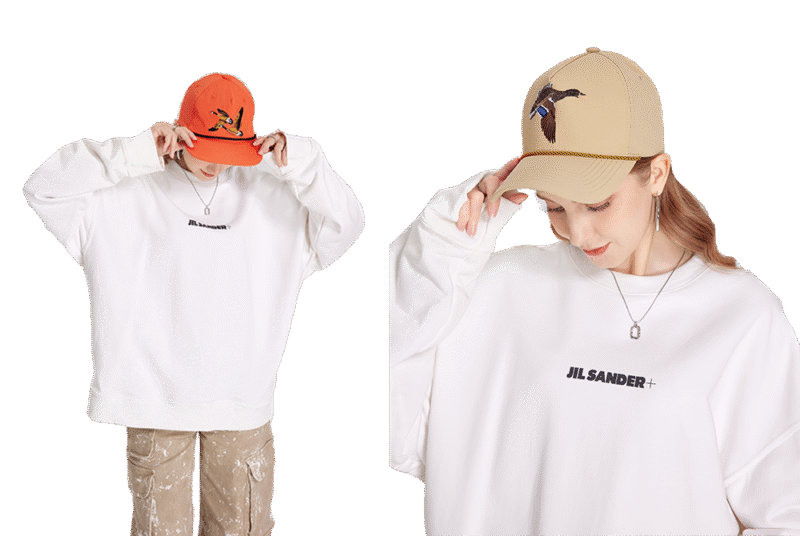Rope hats, also known as cord hats or rope strap hats, are characterized by a distinctive rope or cord detail running across the brim. This unique design feature has become a recognizable accessory in both fashion and function. What started as a practical design element has evolved into a cultural and stylistic statement. This article will delve into the origins, uses, cultural significance and types of rope hats, and explore why they are still so popular today.
Origin of the rope hat
The origin of rope hats can be traced back to maritime and agricultural communities where durability and function were paramount. Sailors and fishermen wore early rope hats to withstand the harsh conditions at sea. The rope detail, often referred to as a nautical rope, was initially functional, allowing the wearer to secure the hat against strong winds or tie it down when not in use. Over time, as hats evolved from purely functional gear to fashion accessories, the rope detail persisted as a nod to their rugged, nautical roots.

In agricultural settings, rope hats provided both shade and stability. Farmers and ranchers adopted the style for its practical use and simple design, contributing to its integration into Western and workwear fashion. The rope cord became synonymous with durability, functionality, and a rustic aesthetic that resonated with outdoor workers.
Uses of rope hats
Today, the rope feature on these hats still serves a practical purpose. The cord adds an extra layer of structure, helping to maintain the hat’s shape and providing a tactile, non-slip grip. This makes rope hats particularly suitable for outdoor activities like fishing, hiking, and boating. The rope also reinforces the brim, preventing it from sagging or losing its shape over time.

Additionally, the rope detail can be used for adjusting fit or attaching small accessories, making the hat even more versatile. Beyond function, the rope serves as a visual accent, creating a more defined brim and lending the hat a distinctive silhouette that sets it apart from other cap styles.
Cultural and Fashion Significance
As with many functional designs, rope hats have transcended their utilitarian origins to become a symbol of certain lifestyles and subcultures. Brands associated with outdoor adventure, marine life, and rugged workwear have embraced the rope hat as part of their core aesthetic. This includes surf and skate brands, country and western labels, and even high-fashion designers seeking to evoke a sense of nostalgia or Americana.
In recent years, rope hats have found a place in streetwear and casual fashion, with bold colors, custom embroidery, and playful designs. This resurgence has not only revived the style but also positioned it as a versatile accessory that bridges the gap between function and fashion.
why are rope hats popular
For many brands, the rope hat has become a powerful marketing tool. The distinctive rope detail offers a prime spot for logo placement, making it a popular choice for promotional merchandise and team apparel. The rope serves as both a functional element and a visual anchor, drawing attention to the brand’s identity.Then you can contact us to customize your rope hat.
Iconic brands have incorporated cord caps into their product lines, associating them with durability and outdoor adventure. Meanwhile, independent brands are using cord caps as a canvas for creative expression, offering custom designs that cater to niche audiences. The cord cap is also favored by sports teams and corporate brands for its vintage appeal and utilitarian design. Click here to know more about the reasons why rope hats are popular.
Here are some common development types of rope hats:
▶Classic Rope Cap: Traditional baseball cap with a rope detail across the front panel above the brim. Typically features a structured crown and flat or slightly curved brim.
▶Trucker Rope Hat: Combines the classic rope detail with a mesh back panel for breathability. Often has a snapback closure for adjustable sizing.

▶Five-Panel Rope Hat: Features a low-profile, five-panel construction with a rope accent. Commonly used for a more streetwear or skate-inspired look.
▶Bucket Rope Hat: A bucket hat design with a rope detail around the base of the crown or as a chin strap. Often used for outdoor and fishing styles.
▶Boater Rope Hat: Inspired by vintage boater hats, featuring a flat, wide brim and a decorative rope band. Traditionally made of straw or other woven materials.
▶Military Rope Cap: Similar to military cadet caps but with a rope detail. Often includes a flat top and structured design.
▶Rope Visor Cap: Combines a rope detail with a visor-style brim, ideal for sports or sun protection.
Conclusion
Rope hats, originally designed for maritime and agricultural purposes, feature a distinctive rope detail across the brim that once served practical functions such as securing the hat against strong winds and maintaining its shape. Over time, this functional element evolved into a stylish accent, symbolizing durability, ruggedness, and a connection to outdoor and workwear culture. Today, rope hats are widely embraced in streetwear, casual fashion, and promotional branding, with various styles like classic rope caps, trucker hats, bucket hats, and military caps. The rope detail not only reinforces structure but also provides a prominent spot for branding and creative expression, making these hats a versatile fashion accessory that bridges function and style.
FAQ
Where did rope hats come from?
Rope hats originated from sailing and agricultural communities, where the rope served both functional and decorative purposes.
What is the use of rope hats?
Rope hats provide sun protection and comfort, while the rope adds structure, durability, and a unique visual style.
Why do people put ropes on hats?
The rope was originally used to reinforce the brim and keep its shape. Today, it also serves as a retro or stylish design element.






